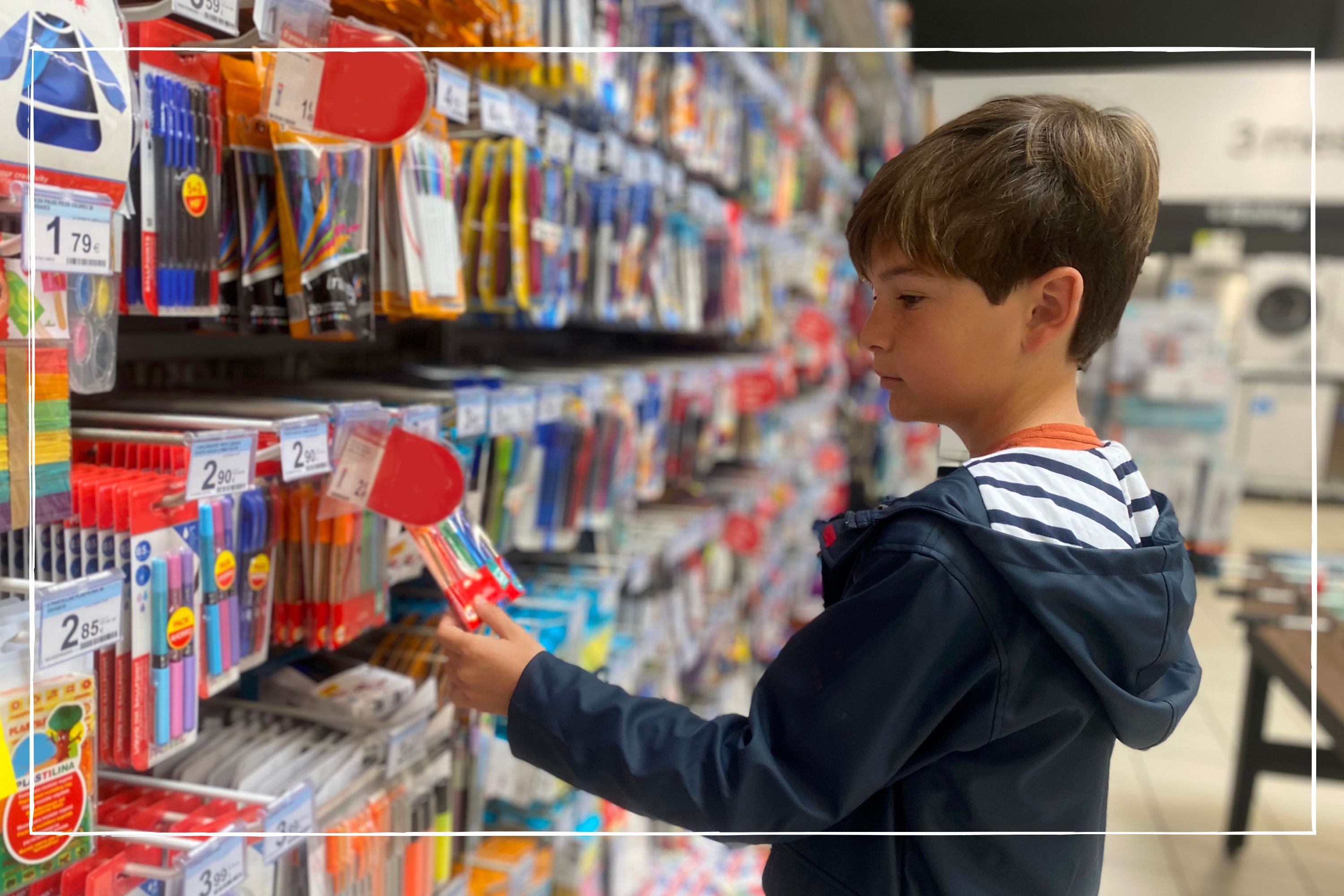50/30/20 budgeting rule: 5 things all families need to know (and #3 is key)
The 50/30/20 budgeting rule can help you manage your family finances. Here are five things you should consider before adopting it, and other budgeting methods that might suit you better.

Many money experts swear by the 50/30/20 budgeting rule, but it’s important to know exactly what’s involved before adopting this type of household budget.
As the cost of living crisis continues, many families will be concerned about how to save money. They might also be using the best money-saving apps or specific budgeting apps to help keep on track with their family's financial goals. And when you understand what budgeting is, you will see that there are lots of different methods to choose from.
Goodto.com's Money Editor Sarah Handley says: "Whether you are looking to cut spending to help make ends meet or looking to save for your family's future, getting a handle on your family budget is essential. But to start with, you need to understand what your goals are so you know what you are working towards, and can choose the best budgeting method that works for your circumstances."
The 50-30-20 budget rule could be the answer for many. Here we explain how it works, and what you should think about to determine whether it's the best solution for your family.
How does the 50/30/20 budgeting rule work?
In general, the idea behind the 50/30/20 budgeting rule is that you split your household income by percentage into three specific categories:
- 50% on needs. This means essential living expenses, such as rent/mortgage, bills, food and transport to work
- 30% on wants. This is your discretionary spending such as eating out, shopping, holidays and hobbies
- 20% on savings. This means putting money into a savings account, investment or pension.
For example, if your household income was £2,000 a month, you’d spend £1,000 on needs, £600 on wants, and you’d save £400.
Personal finance expert Andrew Hagger from MoneyComms said: “The 50/30/20 rule is a simple percentage-based budgeting method that can help families to plan their monthly budget and start building a savings pot for the future. The beauty of this budgeting strategy is that it doesn’t require too much time or effort.”
GoodtoKnow Newsletter
Parenting advice, hot topics, best buys and family finance tips delivered straight to your inbox.
But for the 50/30/20 budget rule to work, there are certain things you need to know.

What to consider before adopting the 50/30/20 rule
1. The 50/30/20 rule needs to be realistic for your family
This type of budgeting only really works if your essential bills account for around half your income. If your mortgage and household bills are high compared to your income, or you’re struggling with debts, it will be very difficult to only spend 50% of your income on ‘needs’.
Personal finance expert Andrew Hagger says: “The problem is the 50/30/20 won’t work for everybody, particularly if your essential costs are more than 50% of your income. I.e., If your bills come to £1,500 and your income is £2,000 then unfortunately this style of budgeting isn’t an option.”
2. You and your partner (if you have one) will need to agree to the same budgeting rule
If you have a partner and manage your money together, then they will need to be fully on-board too in order to get the best results. Depending on exactly how you manage your money together, this could include checking in with each other to see what money is being spent on.
It could cause arguments if one of you blows most of the monthly ‘wants’ money on a big night out while the other parent stays at home with the children. Or one of you might classify the latest iPhone on a pricey tariff as a ‘need’ while the other might see the latest smartphone as a ‘want’.
3. Ideally you need to be debt-free before trying the 50/30/20 rule
There’s no provision in the 50/30/20 rule to allocate any money to debt payments. That’s not to say it won’t work if you have debts – you could include debt repayments in the 50% ‘needs’ or change the 20% savings to debt repayments until you have paid it all off.
With interest rates high, it's a good idea to pay off your debts as soon as possible.
4. You need to be disciplined to stick to a budgeting rule
You will need some willpower to stick to the 50/30/20 rule and be strict about what goes in each category. Takeaways, for example, should probably come under ‘wants’, while grocery shopping will be classified as ‘needs’ - even though both purchases will feed your family.
The most straightforward way to be disciplined about the 20% savings is to set up a regular payment into your savings for the day after you get paid.

Kevin Brown, savings specialist at financial services company Scottish Friendly, said: “Automating the process removes the hassle of doing it manually and reduces the temptation to spend the money.”
He added: “Seeing your savings grow also helps you to stay motivated. It’s therefore important to make your money work as hard as possible for you, while also ensuring you have easy access to any cash that you might need in the short-term. This means shopping around to find the best savings account deals and splitting your money between different types of savings accounts, as well as potentially investing some of your money to maximise your potential returns over the longer term.”
5. Unexpected expenses might derail your budgeting plans
If you’re just starting out with the 50/30/20 budget rule, unexpected costs such as a broken boiler or car problem could be tricky to deal with until you have built a sufficient savings pot.
If you need to borrow money on a credit card or overdraft to deal with an emergency, repaying the cash will need to be accounted for somewhere in your budget.
Other budgeting methods that might suit you better
Depending on your income, outgoings, savings goals and debt situation, other types of budget – cash-stuffing, for example, might work better for you.
If you don't like the idea of cash stuffing, then budgeting app HyperJar could be suitable. It allows you to split your money amongst digital jars, which can be a great way to manage your budget.
There's also a reverse budget method, which can suit people with decent income who want to prioritise their savings pot above all else. Out of your income, your prioritise putting money into your savings account, and then use the rest for needs and wants.
If you are super disciplined, or have a habit of overspending, the zero budgeting method could work for you. This is when you allocate every pound of your income to a specific expense. This isn't to say you spend your entire income each month - you can still allocate money to a savings pot. The point of this method is that you are very intentional about how you allocate your income, and avoid any frivolous spending.
However you choose to budget, its a good idea to avoid these money mistakes to keep your finances in good condition. It's also a good idea to try and improve your credit score if you can.

Emma Lunn is a multi-award-winning journalist who specialises in personal finance and consumer issues. With more than 18 years of experience in personal finance, Emma has covered topics including all aspects of energy - from the energy price cap to prepayment meter tricks, as well as mortgages, banking, debt, budgeting, broadband, pensions and investments. Emma’s one of the most prolific freelance personal finance journalists with a back catalogue of work in newspapers such as The Guardian, The Independent, The Daily Telegraph, the Mail on Sunday and the Mirror.
-
 How to save money: 28 family-friendly money-saving tips for mums and dads
How to save money: 28 family-friendly money-saving tips for mums and dadsUnderstanding how to save money is key to limiting the impact of rising costs as much as possible
By Sarah Handley
-
 14 hidden benefits of your Amazon Prime membership
14 hidden benefits of your Amazon Prime membershipWe reveal the less-obvious perks of a Prime membership that will help you get the most value out of your subscription fee
By Rachel Wait
-
 14 surprising ways to spend your Tesco Clubcard vouchers - from restaurants and cinema passes to mini breaks and Disney+
14 surprising ways to spend your Tesco Clubcard vouchers - from restaurants and cinema passes to mini breaks and Disney+Tesco Clubcard vouchers can help you cut the cost of everything from groceries and travel to days out and cinema tickets
By Heidi Scrimgeour
-
 How to get Disney+ for free and save up to £79.90 a year
How to get Disney+ for free and save up to £79.90 a yearEven though the streaming giant ended its free trial offering, there are still multiple ways you can get Disney+ for free for up to 12 months
By Sarah Handley
-
 Parents of teens who have just taken their GCSEs urged to check child benefit status ahead of August deadline
Parents of teens who have just taken their GCSEs urged to check child benefit status ahead of August deadlineWith a child benefit deadline looming, some parents could see their payments reduced or stopped altogether - here's why
By Sarah Handley
-
 Parents should hold off buying this back to school staple 'as close to their first day as possible', says retailer
Parents should hold off buying this back to school staple 'as close to their first day as possible', says retailerWith parents turning their attention to kitting their kids out for the new school year, research suggestions which items should be left until the last minute
By Sarah Handley
-
 7 ways to save on back to school essentials, as its revealed parents will spend £2.3 billion in 2024
7 ways to save on back to school essentials, as its revealed parents will spend £2.3 billion in 2024We share ways you can get your child all the bits and bobs they need for the new school year, without breaking the bank
By Sarah Handley
-
 What day is child benefit paid around the bank holiday? Everything parents need to know
What day is child benefit paid around the bank holiday? Everything parents need to knowKnowing which day child benefit is paid when it comes to the bank holiday can help families plan their budgets accordingly
By Sarah Handley